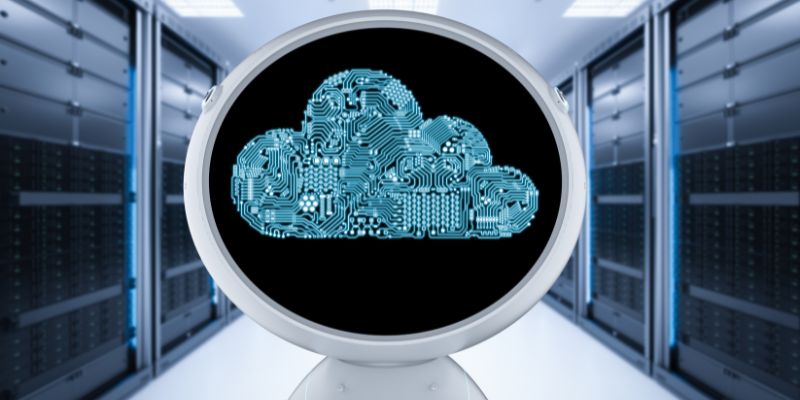A significant trend that has come to the fore in contemporary times is cloud migration. It has transformed the IT infrastructure and operations landscape as we know it. Today, data, applications, and IT processes are constantly moving from on-premise data centers to cloud-based environments, to support better scalability, flexibility, and cost-effectiveness.
Effective IT asset management lifecycle strategies are of paramount importance in this transition. From procurement to disposal, IT asset lifecycle management ensures that organizations are adequately equipped to get maximum returns on investment while fiddling with the complexities of cloud adoption. Such central concepts as the IT asset management lifecycle and cloud migration are essential for nailing down the lines of the strategic plan, more so with the precise goal of operational brilliance and sustainability in the age of the cloud. This article explores how organizations and enterprises of varying capacities can conform their IT assets to the eccentricities of cloud migration.

Understanding IT Asset Lifecycle Management in a Cloud-Dominated Era
IT asset lifecycle management (ITAM) is an approach adopted by organizations in the management of IT assets throughout their lifecycle, from acquisition to disposal. It involves keeping precise records of assets, monitoring their performance, and ensuring they comply with relevant laws and regulations. This process is crucial for optimizing the performance, utilization, and cost-effectiveness of assets throughout their lifespan.
However, with the rise of cloud computing services, cloud migration has had a remarked effect on traditional IT asset management practices, requiring a reevaluation of asset management strategies.
The focus of IT asset management has shifted from the management of physical assets to overseeing virtual resources. This has demanded the adjustments of asset lifecycle management practices to address the unique challenges and opportunities presented by cloud environments.
The Role of ITAD in Cloud Migration
During’ the virtualization era, where organizations are moving their data and processes to cloud service providers, the old-fashioned hardware often requires data destruction and e-recycling. ITAD is an abbreviation for IT Asset Disposition, and it is one of the essential components in line with the migration to cloud systems. Essentially, it entails disposing of your old, out-of-order, or useless IT assets in a safe and responsible manner.
ITAD and e-recycling help IT-focused companies adhere to data protection guidelines by promoting an environmentally friendly disposal system that diverts electronic waste from landfills. However, with cloud computing comes a new challenge to ITAD; the need for comprehensive data-wiping techniques for decommissioned servers and storage devices.
Compliance and Standards in IT Asset Lifecycle Management
When it comes to IT asset lifecycle management, achieving effective ITAD demands compliance with certain international standards governing electronic asset management and disposition. These standards include R2v3, ISO 9001, ISO 14001, and ISO 45001, and they direct different aspects of IT asset disposition. Let’s take a look at them individually.
- R2v3: R2v3 is an abbreviation for Responsible Recycling (R2) Standard, version 3. This is the most recent iteration of the Responsible Use and Recycling Standard. It sets the guidelines for the safe and sustainable recycling of electronic waste globally.
- ISO 9001: Developed by the International Organization for Standardization, this globally recognized standard governs quality management systems (QMS). ISO 9001 sets out a holistic structure to guide organizations in implementing, maintaining, and continually improving quality management systems.
- ISO 14001: Similar to ISO 9001 in its development, this internationally recognized standard is directed at environmental management systems. It outlines steps organizations must take to identify and mitigate the impact of their activities on the environment.
- ISO 45001: ISO 45001 is the international occupational health and safety standard. It officially replaced OHSAS 18001 (the previously recognized health and safety standard) in 2021. It highlights a proactive framework for organizations to adopt in managing occupational health and safety risks, thereby averting work-related injuries and fatalities.
In order for organizations to manage IT asset disposal and recycling in an environmentally responsible manner, it is crucial to adhere to these standards. But why bother about recycling or refurbishing e-waste after pertinent data has been destroyed?

The Benefits of E-Recycling in IT Asset Disposition
The advantages of recycling electronic waste when disposing of IT assets are diverse. They include but are not limited to the following;
Data Security
Proper IT asset disposition erases data stored on electronic hardware and devices permanently; this prevents third parties from gaining unauthorized access to sensitive organizational information.
Resource Conservation
Electronic devices, particularly those used in IT setups, are manufactured with several components containing rare earth metals and valuable materials like silver and copper. E-recycling facilitates the recovery and reuse of these resources, limiting the demand for these materials on the market and the consequent environmental impact mining for them would cause.
Regulatory Compliance
In certain jurisdictions, recycling e-waste is not a matter of choice. There are regulations governing the disposal of hazardous materials that have been put in place, and e-recycling ensures compliance with these regulations. These help IT enterprises avoid run-ins with the law that may bring about fines or other legal penalties.
Energy Savings
Compared to mining and refining raw materials, recycling e-waste and repurposing them for new devices consumes relatively less energy. This energy conservation aligns e-recycling with sustainable IT asset management strategies that contribute to overall corporate social responsibility.
One notable instance of how beneficial e-recycling can be to organizations, states, and the environment is Repowered (formerly known as Tech Dump), a nonprofit organization based in Minnesota. Between 2011 and 2021, Repowered collected and processed over 35 million pounds of electronic waste, i.e., 5% of e-waste gathered in Minnesota annually. Through these efforts, the nonprofit has drastically reduced the environmental impact of electronic waste, creating jobs and recovering valuable and reusable materials such as platinum, copper, and palladium in the process.
Strategic IT Asset Management Post-Cloud Migration
Even after successfully migrating valuable data and software infrastructure to the cloud, organizations still need strategic IT asset management to oversee other on-premises assets and cloud-based resources. These post-migration management strategies involve a continuous reassessment of assets and IT asset management lifecycles in order to effectively plan for the lifecycle of assets that have been moved to the cloud. In this matter, adopting ITAD strategies that adjust to a hybrid IT environment can ensure enterprises remain in line with regulatory guidelines and environmental responsibilities.

Conclusion
Few enterprises and organizations can function without cloud computing services nowadays. As such, adapting IT asset lifecycle management practices for cloud migration instances is essential to ensuring a smooth transition to cloud environments without faulting regulatory compliance or environmental laws.
As cloud computing continues to gain ground, the need for organizations in IT and other industries to reassess their IT asset management strategies to ensure they are well equipped to manage the lifecycle of both physical and virtual assets has become more evident than ever. Reviewing these strategies to adapt to modern trends means a step towards responsible environmental management and sustainable business growth in the cloud era.
Is your organization struggling to adapt IT asset management practices amid cloud migrations? You’re not alone – this transition brings unique challenges. At ReluTech, our seasoned experts have your back. We provide personalized ITAD services and sustainable IT asset management consulting to guide you every step of the way. Contact us today for secure data management and compliant asset disposition processes.